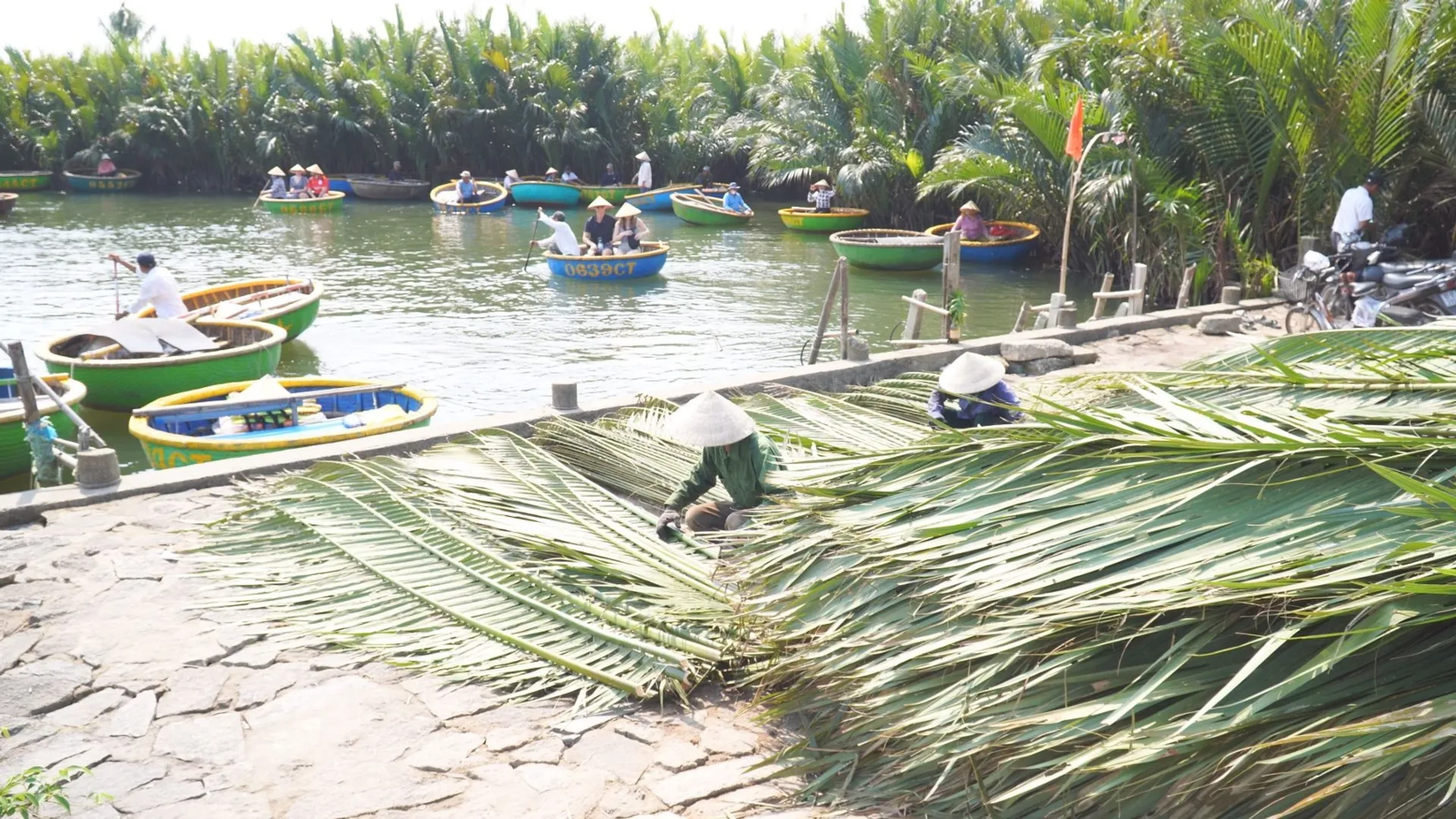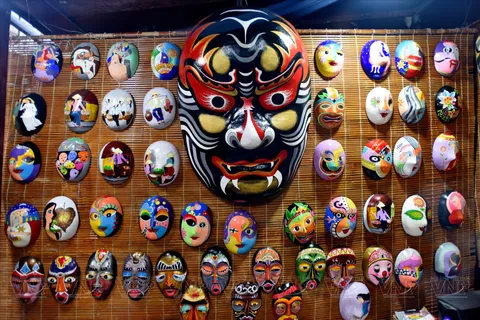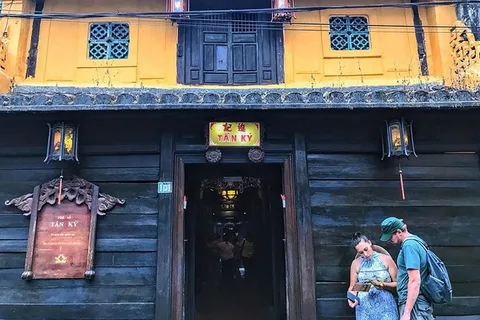The Unique Craft of Building Houses with Water Coconut Leaves
The craft of weaving nipa palm leaves has been practiced for generations in Cam Thanh. The leaves are harvested...
What do you know about the craft of nipa palm leaf weaving in Cam Thanh?
The traditional Chăm weaving village, known as “nghề chằm lá dừa” in Cam Thanh, is a local craft village in the Cam Thanh commune near Hoi An, Vietnam. The villagers are skilled in making products from nipa palm leaves, such as roofing materials, baskets, hats, mats, and decorative items.
The craft of weaving nipa palm leaves has been practiced for generations in Cam Thanh. The leaves are harvested from the local nipa palm forests, which are abundant in the region. After collecting the leaves, they are dried, cut, and woven into various products by hand, a process that requires great skill and patience.
The village's weaving products are popular among locals and tourists alike, as they are eco-friendly and showcase the unique cultural heritage of the area. Additionally, the craft supports the local economy and provides employment opportunities for many families in Cam Thanh. Visitors to the village can often watch artisans at work, learn about the craft, and even try their hand at weaving.
Nipa palm leaves in Cam Thanh have been listed as part of the national intangible cultural heritage.
The origin of the craft of building houses with bamboo and roofing them with water coconut leaves in Cam Thanh (Hoi An City) remains a mystery. However, it is known that the people living near the Thu Bồn River mouth have been intertwined with the water coconut environment for centuries. Recently, this traditional craft in Cam Thanh was recognized as a national intangible cultural heritage by the Ministry of Culture, Sports, and Tourism.
Stretching about 4 kilometers from the edge of Hoi An's ancient town to the Cua Dại ward, the Cam Thanh coconut forest has become a significant tourist attraction, drawing thousands of visitors daily.

Coconut leaf harvest (Source: Internet).
In the past, water coconut trees were often overlooked and considered of little value. However, the tourism boom in Hội An and the rising trend of eco-friendly living have led local restaurants, hotels, and residents to favor bamboo and water coconut leaves for roofing and decorating spaces.
Experience in Choosing Coconut Leaves and Creating Quality Products
Experienced locals teach newcomers how to practice this craft. Each day, residents venture into the Bảy Mẫu coconut forest to select large, mature, and undamaged coconut branches. These branches are dried and then woven and treated to create roofing and wall panels for houses and buildings.
Choosing Nipa Palm Leaves:
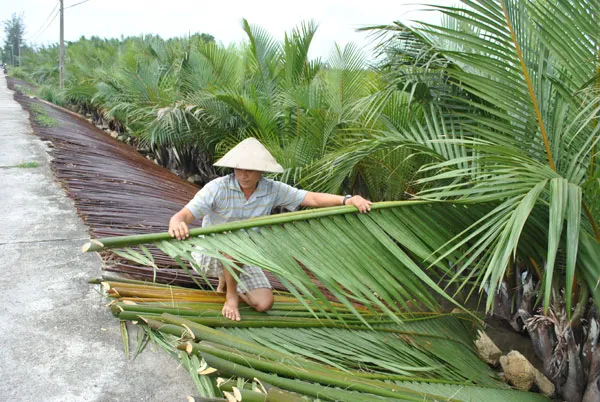
Choosing Nipa Palm Leaves (Image source: Internet).
Harvesting Time: Select nipa palm leaves during the dry season when they are less likely to be moist or moldy. Ideally, leaves should be harvested early in the morning when they are cool and pliable.
Leaf Quality: Look for mature, healthy leaves that are free from pests, diseases, or damage. They should be firm and robust, with a good green color, indicating freshness and strength.
Leaf Size and Shape: Choose leaves that are large and have a uniform size for easier weaving. Leaves that are too small or irregular may result in less consistent products.
Preparation: After harvesting, leaves should be cleaned thoroughly to remove dirt and insects. They should be dried in a well-ventilated area to prevent mold and maintain flexibility.
Crafting High-Quality Products:
Cutting and Preparing: Once dried, cut the leaves into appropriate sizes and shapes for your intended product. Ensure that the cuts are clean and precise to facilitate smooth weaving.
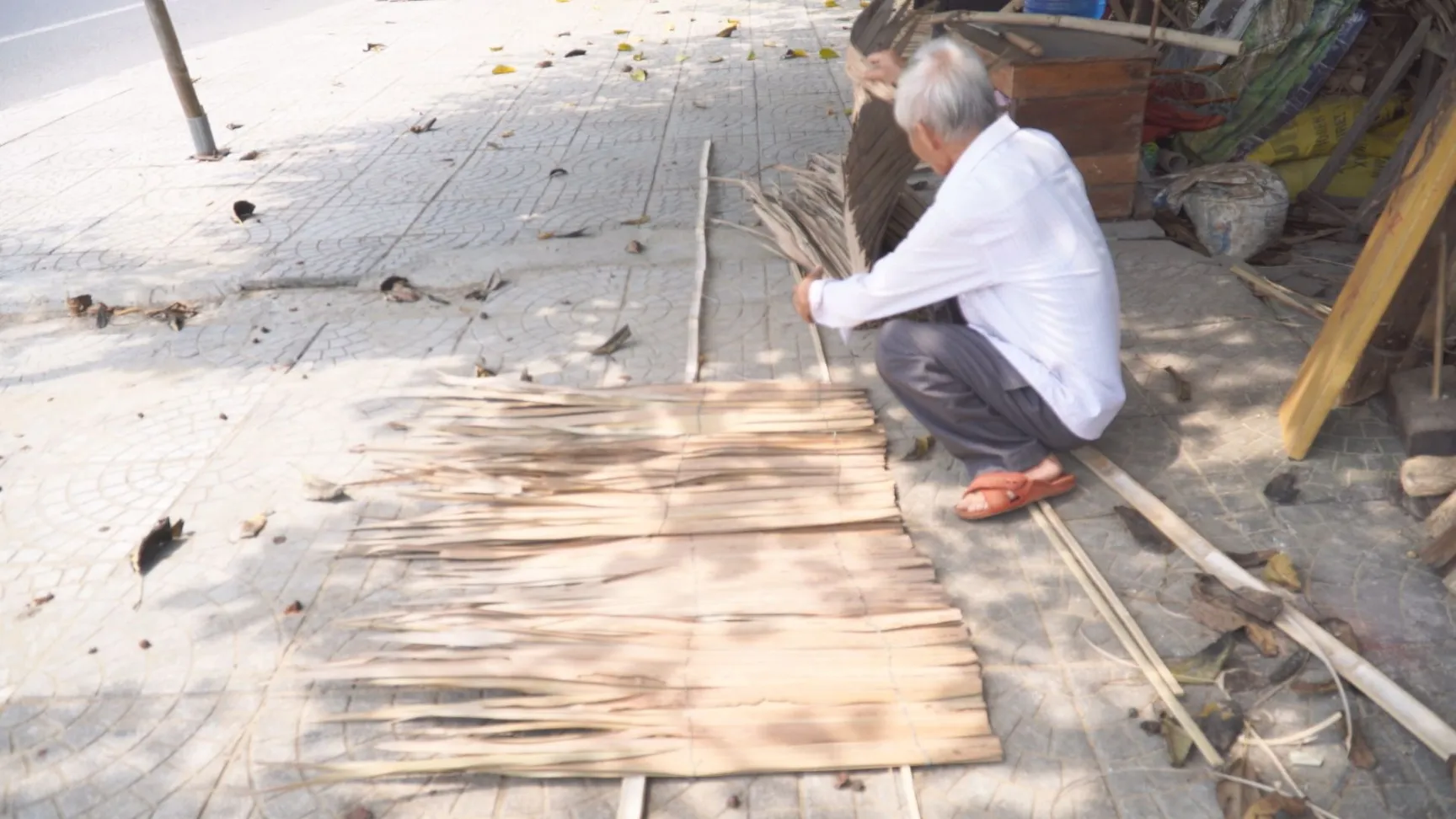
Weaving Technique: Use traditional weaving techniques and ensure that each stitch is tight and secure. Consistent tension and technique are crucial for creating durable and aesthetically pleasing products.
Finishing Touches: After weaving, products may need to be treated or finished to enhance their durability and appearance. This can include coating with natural oils or lacquers to protect against moisture and wear.
Quality Control: Inspect the finished products for any defects or inconsistencies. High-quality products should be well-constructed, with no loose ends or gaps.
Storage: Store finished products in a dry, cool place to maintain their quality. Proper storage helps prevent damage from humidity or pests.
By carefully selecting and preparing nipa palm leaves and using skilled crafting techniques, artisans can create high-quality, durable products that highlight the beauty and tradition of this craft.
Visitors to Cam Thanh Water Coconut Village
Visitors to Cam Thanh are encouraged to participate in workshops, engage with the artisans, and purchase the handmade products, directly contributing to the village's economy and helping ensure the continuation of this unique cultural tradition. The weaving village of Cam Thanh thus stands as a living example of how traditional crafts can be preserved and adapted in a rapidly changing world.
